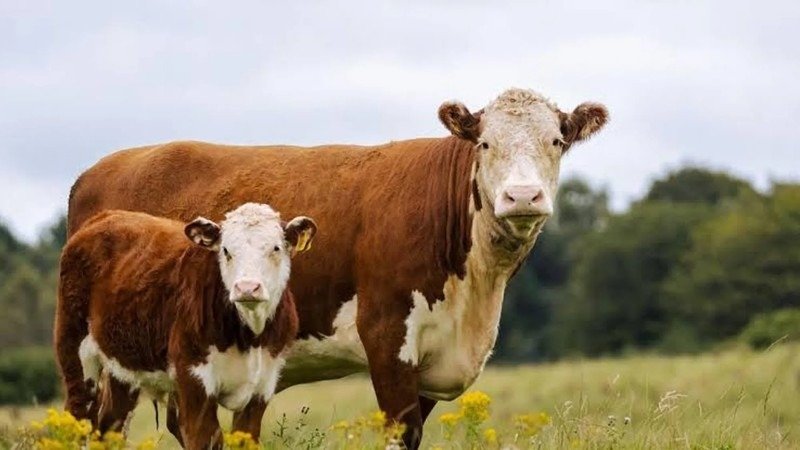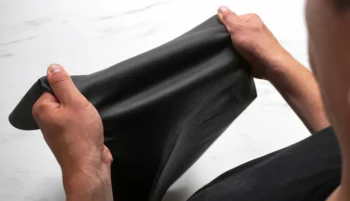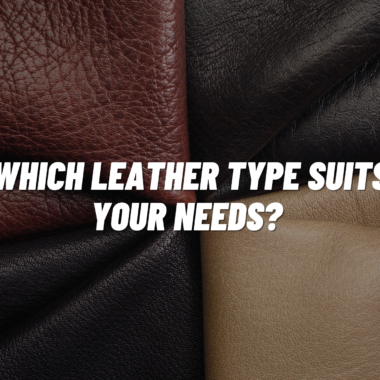The use of leather spans centuries because people have selected this material for constructing jackets, bags, wallets, and hats. However, not all leather is equal. The comparison between American Bison Leather vs. Traditional Cowhide Leather occurs frequently in the market. The main differences between these materials range from durability to surface texture and overall performance. This guide will explore the key contrasts between American Bison Leather vs. Traditional Cowhide Leather, helping you determine the best choice for your needs.
Source of Leather

For many generations, American bison have inhabited North America, and their leather comes from these animals. Bison remain undomesticated for farming activities; thus, their hide displays distinctive characteristics. The substance pattern along with the heavy fiber structure of bison leather provides superior toughness compared to cowhide leather.
The worldwide adoption of cowhide leather occurs from domesticated cattle herds and represents the top leather variety. The material is famous because it brings together a combination of smooth texture and versatile application strategies. High-fashion brands, together with car producers and durable goods manufacturers, employ cowhide leather for their products, including premium automotive components and luxury handbags, jackets, and wallets.
Processing

The manufacturing steps for bison leather production follow the process of cow leather manufacturing from tanning through dyeing and finishing.
- The production of bison leather includes minimal steps to preserve both its wild appearance and its coarse surface texture. Top-quality bison leather items incorporate vegetable-tanned leather for improved durability and environmentally friendly properties.
- The manufacturing of cowhide leather includes frequent processing to eliminate defects while producing a standard surface. The production of chrome-tanned leather is a standard procedure in creating softer, pliable cowhide leather products.
Strength and Durability

Several shoppers base their ultimate purchase on how long the product will last between bison leather and cow leather. The compact fiber arrangement within the bison hide makes the leather more durable against stretching, tearing, and all-round damage than typical cowhide products. People should select bison leather when they need items to last a long time because of its exceptional durability in products like leather laptop bags and leather duffel bags.
Cowhide leather is soft and supple. Still durable, but not as ruggedly resilient as bison leather. If you want a product that will stand up to years of heavy use, bison leather is the way to go.
Strength
The fiber structure of bison skin itself is denser than cowhide, making it stronger and more durable. When tanned, the collagen fibers in bison leather are loosely woven, making the material highly flexible while maintaining good durability. Cowhide leather has a tight weave, which is harder to stretch but still durable for everyday wear.
Thickness
As bison leather is thicker than cowhide, it adds an extra layer of toughness. This additional thickness allows bison leather products (like leather backpacks and leather jackets) to perform better in extreme conditions. Cowhide leather is a little thinner and more flexible, making it perfect for soft and lightweight pieces.
Texture and Grain
Bison leather vs. Cow leather: Difference in Texture and Grain One of the most noticeable differences between bison leather vs. cow leather is the texture and grain. Bison leather is characterized by pronounced imperfections and a high, rough texture, giving it a rugged exterior. This natural texture enhances the visual impact and individuality of each piece.
Cowhide leather, on the other hand, is smoother and more consistent in its texture. That’s why it’s perfectly suited for luxurious leather accessories and luxury leather bags for laptops that need an impeccable finish.
Appearance & Quality
The distinctive appearance and quality of each leather type create unique visual appeal for both materials. People prefer bison leather due to its rugged natural appearance, while cowhide leather is chosen for its polished and sophisticated look. As time passes, both leather types develop a patina while bison leather darkens more significantly.
Softness and Comfort
The natural softness of cowhide leather provides comfort when used in leather goods that need smoothness, like leather wallets and leather jackets. Repeated use gradually softens bison leather, which develops suppleness without losing its inherent rugged strength.
Resistance to Weather and Moisture
The more resilient structure of bison leather provides it with natural water resistance that cowhide lacks. Its looser fiber structure enables moisture to disperse more effectively. Cowhide leather absorbs moisture more readily and generally needs extra waterproofing unless it goes through special treatment.
Aging and Patina Development
Bison leather and cowhide leather both acquire a patina as they age, which improves their character and appearance. Bison leather darkens and develops a prominent sheen, which makes it perfect for individuals who favor the appearance of aged leather. Cowhide leather transforms into a softer patina, which remains understated.
Flexibility and Break-In Period
While bison leather begins as firmer than cowhide, it develops greater flexibility through regular use. Bison leather products like leather duffel bags and leather wallets need more time to break in compared to cowhide leather products. The leather becomes flexible after proper use but maintains its toughness. Cowhide leather maintains natural pliability, which enables immediate usability.
Cowhide Leather vs. Bison Leather: Differences in Construction

The key differences between cowhide leather vs. bison leather lie in their construction and appeal:
- Bison leather is more durable and has a pronounced grain.
- Cowhide leather is smoother, softer, and more uniform.
- Bison leather is ideal for rugged, long-lasting products.
- Cowhide leather is preferred for refined, everyday fashion items.
Best Leather for Bags and Jackets
When it comes to the best leather for bags and jackets, both bison and cowhide leather have their strengths:
- For rugged travel bags: Bison leather duffel bags are superior due to their toughness.
- For stylish accessories: Cowhide leather backpacks offer a sleeker look.
- For durable jackets: Bison leather jackets provide excellent insulation and longevity.
- For lightweight fashion pieces: Cowhide leather jackets are easier to wear daily.
Leather Crafting and Artisanship
Both bison and cowhide leather are shaped and refined using specialized leather crafting tools unique to skilled artisans. Because of its grainy texture, bison leather may be more difficult to work with than cowhide. The result, however, is a singular product that has made it a staple among luxury leather makers.
Environmental Impact of Bison and Cowhide Leather
Some argue that bison leather is more sustainable because bison are usually raised in open country outside of Australia without intensive production methods. At one end of the leather scale, too, is cowhide leather. It comes from large-scale cattle farming and thus has a bigger environmental footprint. Hence, from an eco-individualist standpoint, bison leather may naturally seem the better option.
Conclusion: Bison vs. Cow Leather—Which One Should You Choose?
When selecting leather products, the choice between bison leather and cow leather depends entirely upon which qualities you find most important. Bison leather provides the best long-term durability with a distinctive natural pattern that becomes more attractive with age, so it stands above cow leather as a superior material. Rugged products such as duffel bags, leather jackets, and wallets are best suited to use bison leather.
Cowhide leather serves well for fashion accessories and lightweight jacket applications, especially for users seeking a uniform appearance combined with a soft feel.
Purchasing full-grain leather products of any type will provide you with equipment that lasts multiple years. Before purchasing leather laptop bags or leather hats or leather duffel bags, consumers need to understand bison hide and cowhide quality differences to select the most suitable product.


